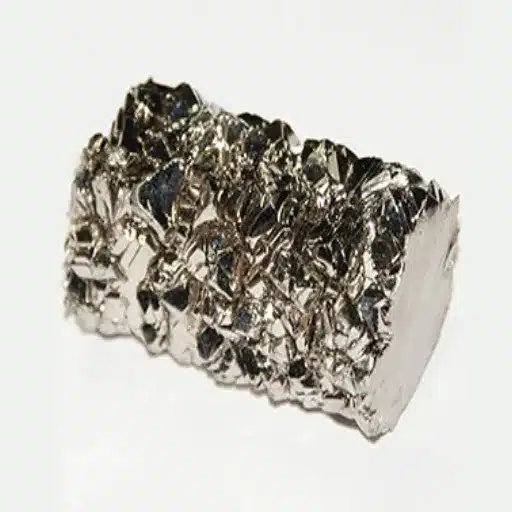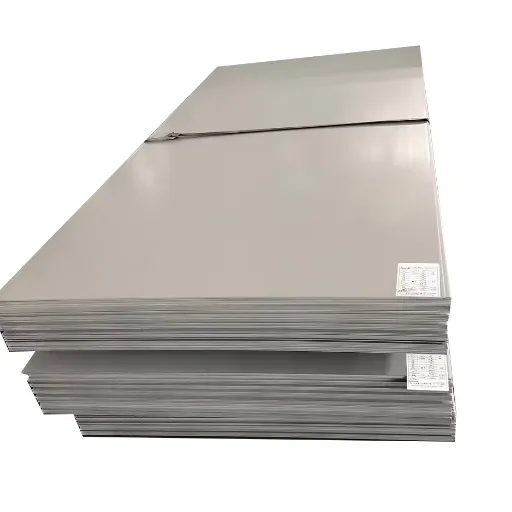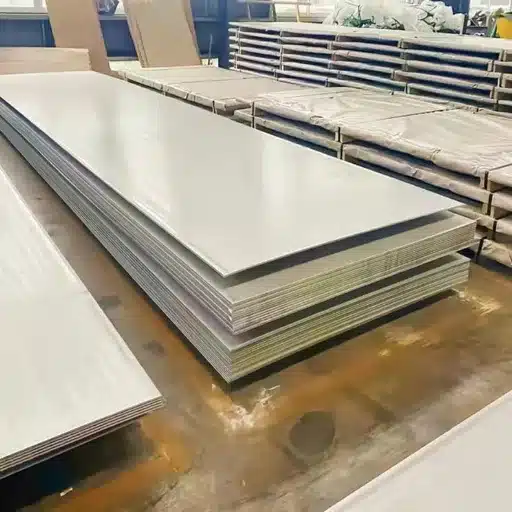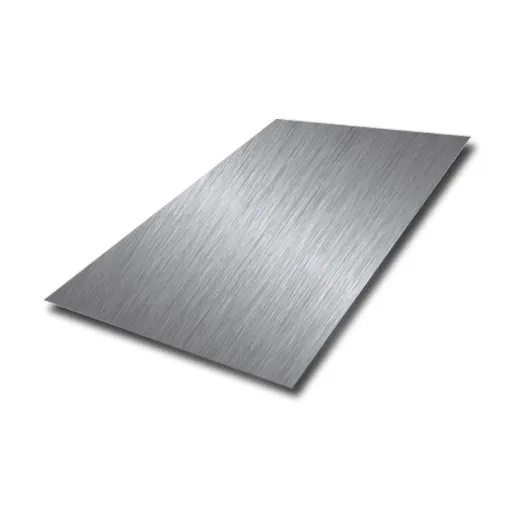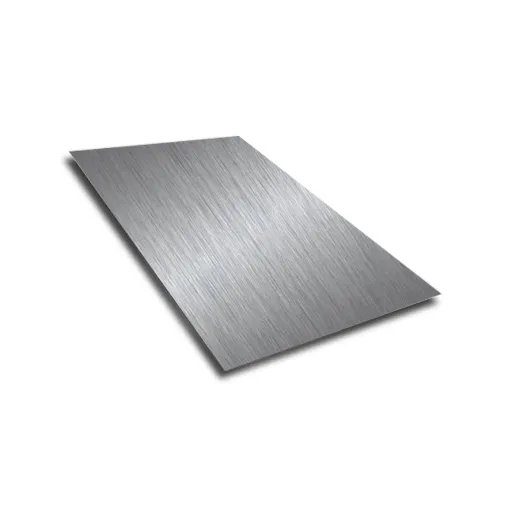While comparing strength and hardness of metals, titanium and iron come up as two of the major contenders, each possessing a unique set of qualities and potential uses. These metals virtually dominate modern industry-from aircraft making to structural construction. Is titanium, however, really stronger than iron? This blog attempts to analyze the two metals, their characteristics, molecular structure, and performance standards, to find an answer for it. By examining the mechanical properties regarding tensile strength, density, corrosion resistance, etc., we can find which of the two fits the bill for a single particular application and industry. Come with us in this journey exploring the science behind these two prominent materials.
Introduction to Metal Strength
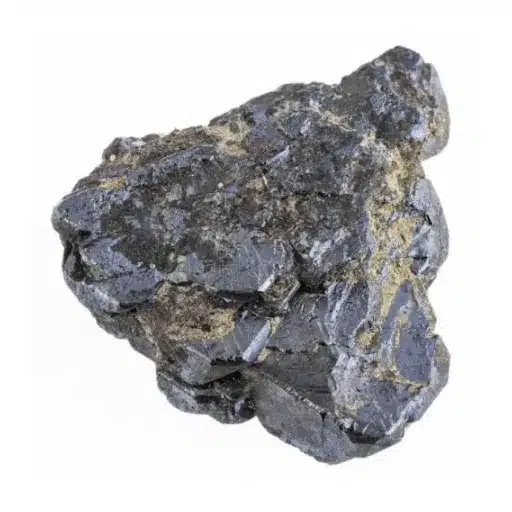
What Defines Metal Strength?
Generally, metal strength is influenced by the ability of the metal to withstand forces without deformation or failure. Some mechanical properties are observed for determining strength: tensile strength, compressive strength, and yield strength. Tensile strength is the maximum stress a material can endure when being stretched or pulled. Compressive strength reflects a material’s ability to resist forces that try to compress it. Yield strength, in contrast, will test the stress at which a metal deforms permanently. These properties are essential for assessing the behavior of a metal under practical conditions.
Another very important factor impacting the strength of metals is their microstructure. Whether it is the arrangement of atoms, grain size, or the presence or absence of alloying elements, all of these variables influence the way metals behave under stress. A very basic example to consider is small grain size, which generally acts to increase strength through grain boundary strengthening. On the other hand, the addition of suitable alloying elements, such as carbon in steels, also enhances mechanical properties by changing the atomic arrangement to achieve desired properties, for instance, hardness and flexibility. This ability to customize will create a cement for the wide diversification of metal usage in industries.
Environmental factors also go a long way in defining the strength of a metal. A metal’s structural integrity can be altered over time by temperature, humidity, and chemical exposure. High temperatures act to weaken metals by accelerating creep processes, i.e., slow deformation under stress. A corrosive environment may cause a further diminution in material strength owing to oxidation or chemical reaction. Therefore, in choosing a metal for a particular application, consideration should be given not only to its own mechanical properties but also to how it will behave under the given environmental conditions.
Importance of Strength in Engineering
Strength is an essential property considered in engineering design and materials selection because it determines the ability of a structure to withstand applied forces without failing. The style of strength considered depends on the nature of the application and the types of external forces involved. These can be tensile strength, compressive strength, shear strength, torsional strength, and impact strength. The following is a detailed exposition of each:
- Tensile Strength: Basically, this strength is concerned with the resistance of a material to being pulled apart by tensile forces. For example, steel with a tensile strength of about 400-800 MPa is considered a material of very high tensile strength and is used widely for structural applications such as bridges and buildings.
- Compressive Strength: This strength refers to the ability of a material to resist failure or buckling when subjected to compressive forces. For instance, concrete with compressive strengths of 20 MPa for residential structures to over 40 MPa for high-performance structures.
- Shear Strength: This critical property needs to be ensured to resist sliding forces acting parallel to the material surface on fasteners and joints. For example, aluminum alloys exhibit shear strengths ranging from 100 to 200 MPa, depending upon the alloying elements present.
- Torsional Strength: This property measures the resistance against twisting forces. Important for shafts and gear systems, steel shafts are for example preferred due to their ability to resist high torsional forces without noticeable deformation.
- Impact Strength: Sometimes referred to as toughness, this measures a material’s ability to absorb energy and resist sudden breaking due to an impact. Materials such as tempered glass and high-impact polymers are widely used in safety applications, owing to their high impact strengths.
Each one of the mechanical strength criteria must be an integral part of the design process, since each criterion has a different implication for the choice of materials depending on safety, function, and durability in various operating environments.
Overview of Titanium and Iron
Titanium and iron are two commonly used metals, each with specifications important for a number of industrial and technological applications. Titanium is a light metal, with its very nature a strength-to-weight ratio, corrosion resistance, and resistance to extreme temperatures, it offers. Because of these factors, titanium is employed in the aerospace, medical, and marine industries. Iron, in general, is appreciated for its abundance, low cost, and multipurpose uses. It is considered the main element in the formation of steel, wherein it has all the applications of construction, automotive, and infrastructure.
Being dependent on the atomic structure and bonding behaviour of these metals, all the core properties are exhibited. Titanium is a transition metal, yet it has a relatively low density and high tensile strength. It tends not to corrode, particularly in marine atmospheres, because it forms a protective oxide film on exposure to air. On the other hand, iron is prone to oxidation and rusting in the presence of moisture, although through alloying with carbon and other elements, compounds such as stainless steel can be enhanced greatly in their mechanical and chemical properties.
From an engineering viewpoint, the choice of materials between titanium and iron depends on the particular details of the application. Titanium finds its place for applications where saving weight without compromising strength is critical, or obviously in areas where great biocompatibility is a must, like surgical implants. Iron and its alloys come into their own when durability on an industrial scale and cost are primary considerations. Both of these metals argue the case for the interplay between material science and practical design considerations, which hence makes it crucial to align material characteristics with operational requisites.
Titanium vs Iron: A Strength Comparison
Basic Properties of Titanium
Titanium is a transition metal that is recognized for its high strength-to-weight ratio and resistance to corrosion coupled with being bioinert. True to that effect, having a density close to 4.5 g/cm³, titanium is much lighter compared to most other metals, such as steels, and this allows for its utilization in places where weight reduction is an absolute imperative for the strength of the object. The tensile strength ranges from 430 MPa to 1,400 MPa based on the grade, while it maintains a low modulus of elasticity at about 110 GPa, making it more flexible when subjected to stress.
Corrosion resistance is considered the prime feature of titanium, which develops a thin oxide surface (titanium dioxide, TiO₂) upon exposure to oxygen that serves as a barrier to corrosion. It is particularly well-suited for marine, aerospace, and medical applications, where the presence of moisture and chemicals is common. As titanium is non-toxic and fully biocompatible, it is broadly utilized for implants, prosthetics, and other medical devices in need of tissue compatibility and durability. Its temperature range for application, going up to about 600°C, further adds to its value concerning high-end applications.
When compared to traditional materials such as steel or aluminum, titanium usually boasts an ability to present several greater advantages when critical areas are considered with respect to needing advanced technical properties and the ability to resist environmental changes. In the various abilities with other modern materials, it opens new horizons for innovations such as 3D printing and hybrid composites.
Basic Properties of Iron
Iron is symbolized by Fe and has the atomic number 26. Being largely abundant and of fundamental nature, it is a well-known element of the Earth’s crust. It has attributes of tensile strength, malleability, conduction of heat, and conduction of electricity. Iron mainly exists in two crystalline forms-BCC and FCC, analyzing which the mechanical property under different temperature and conditions of the element can be comprehended.
Pure iron has a density of about 7.87 g/cm³ and melts at 1538°C (2800°F); thus, for high-temperature applications, it can be used. But it needs design to be alloyed for increased mechanical strength, as pure iron is relatively soft and ductile. Elements of alloy such as carbon, manganese, and chromium make the materials hard, wear-resistant, and corrosion-resistant, therefore forming steel.
As a magnetic material, it finds its use in numerous electrical and industrial applications. It readily reacts with moisture and oxygen to form iron oxides (the familiar iron rust), which is the first thing to be considered during the storage and utilization of iron. The basic considerations include affordable price, ready availability, and compatibility with various production methods; hence, iron still enjoys great demand in construction, machinery, automotive, and manufacturing industries. Lately, material scientists have been harnessing iron in more innovative fields like the design of custom alloys and additive manufacturing.
Comparing Tensile Strengths
The tensile strength of titanium lies between 430 MPa and 1,400 MPa, while for iron, it varies according to its alloy, being generally 400 to 800 MPa for steels.
| Aspect | Titanium | Iron |
|---|---|---|
| Weight | 4.5 g/cm³ | 7.87 g/cm³ |
| Strength | 430-1,400 MPa | 400-800 MPa |
| Durability | High resistance | Prone to rust |
| Elasticity | High (110 GPa) | Moderate |
| Expense | High | Low |
| Usage | Aerospace, Medical | Construction |
| Heat Limit | Up to 600°C | Up to 1,538°C |
Different Types of Strength in Metals
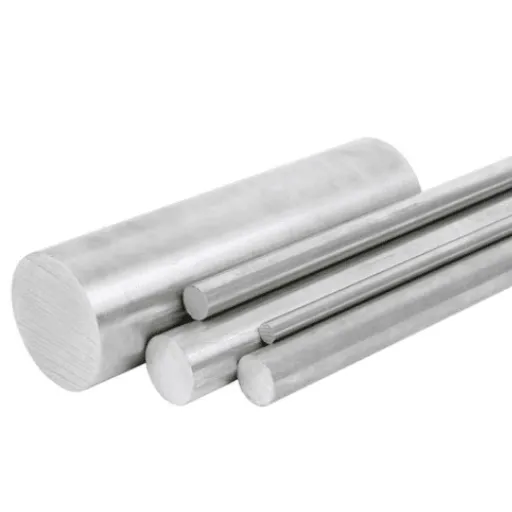
Understanding Tensile and Compressive Strength
In a tensile test, all that is done is pulling the specimen from both ends until failure occurs, and then measuring the load carried by the specimen at this stage. Tensile strength may be determined in megapascals (MPa) and is the force of stress per unit area at the point of breakage. Tensile testing equipment is loaded axially against a specimen until it breaks. Tensile strength is one of the most commonly considered values in high-performance applications. Titanium, for example, has tensile strengths ranging from 430 MPa to 1,400 MPa depending on the alloy under consideration.
Conversely, compressive strength can be understood as a material’s resistance when pressure is applied to it with the intent to crush. This property is extremely important in materials used in building foundations, columns, and load-bearing structures under compression forces. Most materials have greater compressive strength than tensile strength, but the juxtaposition varies with each particular material. For example, concrete has a high compressive strength but a low tensile strength, which means it must be reinforced to handle tensile loads properly.
The knowledge of tensile and compressive strength allows engineers to make informed choices in material selection to optimize performance and safety for given applications. Accurate, data-backed knowledge and analysis lead to assured reliability in critical structures and innovations.
Impact Strength and Its Relevance
Impact strength is the capacity of a material to withstand sudden and forceful loads or shocks thus without fracturing. This property is necessary where dynamic or high-impact forces are expected to work, ensuring structural integrity and avoiding catastrophic failure. Engineering and material science consider impact strength a critical parameter while designing components for manufacturing, construction, automotive, and aerospace industries. Key considerations and facts relating to impact strength are:
- Izod Impact Test Values: This test focuses on measuring the energy taken by materials to fracture under impact. Usually, a material like steel will show greater values in respect to its brittleness compared to, for example, ceramic.
- Charpy Impact Test Results: The charpy impact test measures the ability of a material to resist sudden impacts on a notched specimen, testifying to the material’s toughness and its capacity to absorb energies imposed from external loading.
- Temperature Dependency: The impact strength of many materials, polymers included, undergoes alteration at varying temperatures. The materials become brittle and lose their energy absorption capacities as the temperatures drop.
- Effect of Grain Structure: A metal’s microstructure-grain size and grain orientation-influences its impact resistance. Fine-grained metals usually have more toughness than their coarse-grained counterparts.
- Material Ductility and Toughness: Ductile materials such as aluminum alloys offer a good impact strength, whilst the brittle materials fail much faster when they are subjected to high-impact forces.
When these factors are understood, they become the focal points for selecting materials with engineering solutions that will emphasize safety and performance in high-impact situations.
Fatigue Strength and Durability
Fatigue strength is another term for a material’s ability to resist cyclic or repeated load applications below its ultimate tensile strength without giving way. This property becomes paramount for components subjected to fluctuating stresses for longer periods, such as bridge structures, aircraft components, or automotive parts. Oftentimes, materials such as high-strength steels and titanium alloys are chosen to withstand variations in these repetitive stresses because they offer very high fatigue resistance. Typically, the fatigue strength is evaluated in terms of an S-N (Stress-Number of cycles) curve, which relates the number of cycles to failure for a given stress level.
Durability, on the other hand, deals with a material’s ability to withstand wear, corrosion, and mechanical degradation in time, being used in operational conditions. Factors at play here are also cyclic loading, but other things like environmental exposures and abrasion come into its arena. Therefore, a polymer may have a low fatigue strength as compared with metals; however, its very high resistance to corrosion makes it suitable for applications in which exposure to moisture or chemicals is present. Inductively, the durability-based selection of materials may consider physical property-based protection, whilst each property can be taken into account separately, along with any external protection measures that might be used on the material, such as paints or coatings, or even treatments.
When one considers fatigue strength and endurance as a single entity, lately the philosophy of combination or holistic approach is termed for material selection. This approach considers the conditions of the application of the item, such as the types of loads, environmental factors, and the expected time of operation of the product. Thus, an engineer may attempt to ensure safety, reliability, and long-term serviceability by considering these two properties in the design procedure.
Applications of Titanium and Iron in Industry
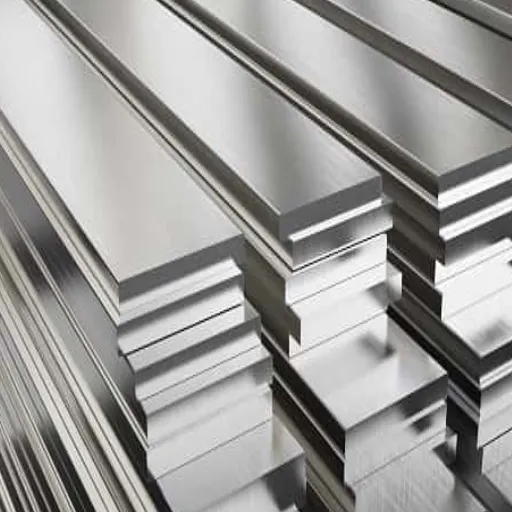
Titanium in Aerospace Engineering
Titanium continues to play the most important role in aerospace engineering, fulfilling exceptional demands bestowed upon it by nature. It has an extremely high strength-to-weight ratio for its size, and it is highly corrosion-resistant; it can withstand almost every temperature extreme. Hence, it has been found suitable in a wide variety of aerospace applications. Five major applications of titanium are enumerated below:
- Aircraft Structural Components
Titanium alloys undergo use in nearly all shoehorned structural elements in ticks of wing, fuselage, and landing gear. Because of higher tensile strength and lower density (about 4.5 g/cm³), it can reduce total aircraft weight and provide higher mechanical enablement. This reduction in weight ensures higher-fuel efficiency and higher load allowance. Hence, modern commercial aircraft use as much as 15 percent titanium in structural components; an example is the Boeing 787 Dreamliner. - Jet Engine Parts
Titanium retains its strength and toughness at high temperatures, making it necessary for components like fan blades, casings, and compressor disks in jet engines. These components are made from the best commercial-grade titanium alloy Ti-6Al-4V (6% aluminum, 4% vanadium) for high temperature and good fatigue resistance. Titanium parts can operate in temperatures exceeding 600°C while still retaining their structural integrity. - Spacecraft Components
Its corrosion resistance and strength make it useful for spacecraft construction. It is used in launch vehicle structures, pressure vessels, and satellite frames to ensure durability and performance in space. For instance, titanium is used in several components in NASA’s Mars rovers to sustain temperature fluctuations between -153°C and 20°C. - Fasteners and Connectors
Titanium fasteners that meet aerospace standards are used for securing the various parts of an aircraft. These fasteners contribute heavily toward saving weight as compared to steel fasteners, yet they extend the same strength. Furthermore, titanium resists corrosion, thus ensuring its longevity and reduction in maintenance in environments exposed to saltwater or chemicals. - Hydraulic Systems
Titanium tubing and components in the hydraulic system ensure strength and durability in the face of high pressures and temperature variations common to aviation. Titanium corrode and wear less with respect to materials like aluminum, which means that it will work more reliably and have a longer service life, especially for military and commercial aircraft operating under harsh conditions.
These uses prove that titanium is an indispensable material in aerospace engineering, and with titanium alloy technology ever evolving, its capabilities and application areas keep expanding.
Iron in Construction and Manufacturing
Due to its tremendous strength, versatility, and availability, iron stands as one of the prominent materials in construction and manufacturing. The prominent industries see the paramount application of iron, ranging from the big, bulky structures like building frames to the tiniest gear parts. The following are the detailed explanations of iron applications in construction and manufacturing:
- Structural Steel for Buildings: Iron is a major constituent element of structural steel, and construction works involving skyscraper buildings, bridges, or residential structures employ it. Because of its ability to withstand tensile load, steel is ideally suited for forming the skeletal framework of buildings and supporting the structure during service.
- Reinforcement Bars (Rebars): Reinforcement bars, mostly made of iron-containing steel, are embedded in the concrete much to its tensile strengths. This concrete, with concrete-tensile strength, is an ideal ingredient in concrete used to construct heavy-duty highways, tunnels, and dams.
- Tools and Machinery: Ironworking industries manufacture iron tools and equipment. From cutting tools to heavy industrial machinery, the common characteristic of iron is its toughness and ease of machining to suit the environments in production.
- Automobile and Heavy Equipment Manufacturing: Cast iron and cast steel have been commonly used in the manufacture of automotive and heavy equipment. Cast iron is known for its high wear resistance for application in engine blocks and steel is used where strength and ductility should be balanced in gears and chassis.
- Pipe and Plumbing Systems: Ductile iron pipes have found widespread application in water distribution and sewage systems. These pipes are chosen for modern infrastructure due to their corrosion resistance and great pressure resistance.
Iron’s cheap recycling ability partially contributes to its widespread use, supporting it further to be a key material used across construction and manufacturing industries.
High-Strength Alloys and Their Uses
High-strength materials are engineered materials that provide enhanced properties in tensile strength, creep resistance, abrasion resistance, etc. High-strength alloys will also be made for environments and working conditions where normal metals are away.
- Aerospace Applications: Then, be said that different kinds of aluminum and titanium are the high-strength alloys used in the aerospace sector. Titanium alloys are used in the manufacture of jet engine parts and structural frames because of their high strength-to-weight ratio and resistance to high temperatures. Steel, on the other hand, finds its use in fuselages and wings due to its light weight and corrosion-resistance feature.
- Automotive Industry: The advent of AHSS steels in automobile manufacturing has not only transformed vehicle design but also safety. These steels enable lighter vehicles that thus use less fuel and are crashworthy. Lately, magnesium alloys are also gaining popularity as lightweight chassis components.
- Construction and Structural Engineering: Steel alloys, such as the quenched and tempered steels, are used in the latest generation of construction of high rises, bridges, and offshore platforms, primarily because of their load-bearing capacity and ductility, which ensure enough reliability under varying dynamic and static stresses to integrate structural integrity.
- Energy and Power Generation: Nickel-based superalloys find major application in power generation, such as turbine blades of gas or steam turbines. The materials show remarkable high-temperature stability, resistance to oxidation, and mechanical strength under elevated temperature for longer periods, thereby imparting efficiency to energy production.
- Medical and Biomedical Fields: Such alloys as cobalt-chromium and titanium are fundamental in medical implants and prosthetics. Their biocompatibility, strength, and corrosion resistance provided for durability and minimized physiological impact, and thus were suitable to be present in the human body for a long time.
As the production technologies evolve, the applications of high-strength alloys also never cease to increase. These materials symbolize the application of advanced metallurgy and engineering, constituting the foundation of innovation in many fields.
The Disadvantages of Titanium Compared to Iron
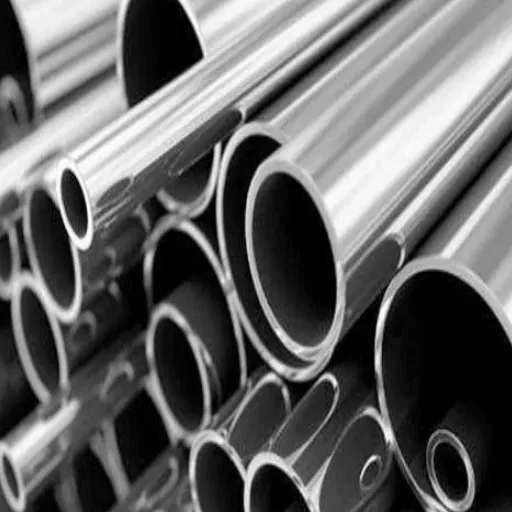
Cost Considerations
Titanium alloy, while having superb strength-to-weight ratio and corrosion resistance, is far more expensive than common metals such as iron and its alloys. The costs can be ascribed to many reasons, starting with its extraction. Titanium occurs chiefly from mineral ores such as ilmenite and rutile; however, the ores must undergo energy-intensive and prolonged methods to be rendered usable as titanium metal. One such method is the Kroll process. Its multi-step approach is entirely responsible for the manufacturing cost.
Moreover, the processing and fabrication of titanium are more complex than those for iron. This is mainly due to its high melting point (around 1,668°C or 3,034°F) and its reactivity at elevated temperatures. Production costs increase with the requirement of specialized equipment and strict control of the environment. Comparatively, iron is available in plenty and easily accessible, making it much cheaper to process and hence chosen for most large-scale industrial applications.
Another important factor is the lifecycle cost. Titanium usually has a longer working life under harsh environments because of its corrosion and fatigue resistance. Still, the cost of initial acquisition and processing usually far exceeds the economic benefits obtained from the use of iron in cost-sensitive projects. In mass market applications, titanium is, therefore, used only in fields where that superior performance justifies the investment, i.e., aerospace, biomedical, and marine engineering.
Availability and Production Challenges
If talking about shortage or scarcity in availability, the fact to be considered is that titanium is present in the crust of the Earth in abundant quantities. It is mainly found as titanium dioxide (TiO₂). The main problem exists in the extraction and refining stages. Although such terms as extraction and refining can be used for every metal, titanium offers one big exception. The complex method that must be applied to separate titanium from its ore, after which the metal can be used, requires a lot of energy and is, therefore, expensive. It involves the Kroll or Hunter method, wherein hazardous chemicals such as chlorine and magnesium are handled. The price of production rises because of these processes-to-the-point of making high demand for such a naturally abundant material a limitation in its accessibility.
Supply chain logistics and resource allocation present other bottlenecks in titania production. Mining and processing operations require extensive infrastructure and capital investment; furthermore, environmental compliance laws are quite strict due to the environmental impact of activities related to extraction. To worsen the situation, only a few major producers are to be found in regions such as China, Russia, and Japan, shifting vulnerabilities onto them: any changes in geopolitical stability affecting the ability of these producers may disrupt global supply chains and so further raise costs.
One more major aspect concerns the need for technical knowledge and specialized equipment used in fabricating and processing titanium for various applications. This metal has a very high melting temperature of 1,668°C, along with a lower capacity to conduct heat, so being 2000 km away from Tom in his college-studded heavens compounded his experience in teaching machining and forming of titanium and inventing techniques, thus reducing large-scale production. It adds to the lead time increases and undermines the industries that desperately need titanium as a critical material. So technically speaking, while making its performance benefits apparent, the availability and production of titanium are challenged by intimidating technical challenges along with economic trials toward widespread use in cost-sensitive industries.
Limitations in Specific Applications
Titanium’s use is curbed or limited in certain cases because of economic, technical, and functional factors. Here are five key constraints that limit its use:
- 1
High Material Cost: Titanium’s price is relatively high compared to that of other materials, for instance, aluminum or steel. Titanium extraction from its ores through the Kroll process is highly energy-intensive, and special handling and processing add to the costs. The raw material prices range from about $25 to $30 per kilogram while aluminum comes for about $2 to $3 per kilogram. - 2
Manufacturing and Machining Challenges: Titanium is hard to machine because of its low thermal conductivity and high hardness, hence high tool wear and slower processing speeds. Whereas some studies claim machining titanium can reduce tool life by as much as 60 percent when compared to machining steel, thereby adding extra costs and complexity to manufacturing. - 3
Galling and Wear Susceptibility: Due to its strength, titanium is usually galling or prone to material transfer during sliding contact. This prevents the titanium from being used in any high-friction components, junior bearing, or kig, where other materials such as steel or composites generally set much better performance with time. - 4
Limited Performance in Extreme Heat: In any event, titanium exhibits excellent high-temperature resistance in comparison with aluminum or ordinary steel but loses strength and becomes unstable at temperatures above 800 °F (427 °C). In this way, aerospace or industrial applications requiring performance above this threshold may pose some question of adverse circumstances to titanium. - 5
Corrosion Considerations in Some Environments: Though titanium is greatly admired for its corrosion resistance, it can be attacked by highly reducing acidic environments, such as hydrochloric acid, or environments rich in fluoride ions. These conditions cause rapid degradation, making it unsuitable for certain chemical processing or marine applications.
These considerations, therefore, stress further the need for tailor-made engineering, pricing, and material selection in titanium-dependent specialized applications.
References
-
Titanium and its minerals – University of Michigan repository discussing titanium content and its properties.
-
Diffusion of titanium in iron – A study on the diffusion properties of titanium in iron, hosted by Harvard’s ADS.
-
Iron and titanium minerals in Hawaiian soils – Research on titanium and iron oxides in soils, from the University of Hawaii.
-
Characterization of Titanium and Stainless Steel Medical Implants – A detailed comparison of titanium and stainless steel properties in medical applications.
-
Dynamic tensile properties of metals – A study on tensile properties of various metals, including titanium alloys.
- Click here to read more.
Frequently Asked Questions (FAQ)
Q: Is titanium stronger than iron?
A: Definitely. Titanium is much stronger if we consider tensile strength. Iron is an everyday metal of fair strength, though titanium would take higher tensile loads without cracking or deforming; hence, it is regarded as a better metal for high-end engineering applications.
Q: Why is titanium considered a strong metal compared to iron?
A: Titanium possesses greater tensile and compressive strengths than iron and can resist stresses before yielding. Its strength-to-weight ratio is high, which renders it suitable for aerospace and military industries that require light materials.
Q: Comparing capabilities, how do titanium and steel fare?
A: Titanium is stronger than many steels, especially when high-strength steel alloys are taken into consideration. But depending on the steel composition, some steel variants may have a higher tensile strength. So, titanium is generally well-known for its corrosion resistance and ability to retain strength in high-temperature applications.
Q: What are the applications where titanium’s strength counts?
A: Titanium finds its way into the aerospace, automotive, and medical device industries. The combination of corrosion resistance and high strength makes it an excellent material for frameworks in heavy machinery and components in jet engines and gas turbines.
Q: Is titanium more durable than iron?
A: Yes, titanium is more enduring than iron, especially in corrosive environments. It resists rust and corrosion, unlike iron, which loses its integrity when exposed to moisture and other corrosive agents.
Q: Can titanium alloys be made stronger than the corresponding iron alloys?
A: Actually, yes. Titanium alloys do have the capacity to cure stronger than iron alloys, especially considering the special properties that titanium would impart. These alloys usually have much greater tensile strength and resistance to corrosion, putting them top in many applications.
Q: How does the yield strength of titanium compare to that of iron?
A: The yield strength of titanium can surpass that of iron, with some titanium alloys achieving yield stresses above 900 MPa, whereas that of iron is typically around 250 MPa. The yield strength of titanium, being much higher, shows how it will accommodate heavy loads and resist deformation.
Q: Why is Titanium chosen as a metal for aerospace applications?
A: Titanium finds its way into aerospace applications because of the high strength-to-density ratio and corrosion resistance it offers. Thus, components can be fashioned to be heavy with the existing machinery that goes through severe working conditions during flight.
Q: How does the density of titanium compare with that of iron?
A: Being lower in density than iron, titanium thereby contributes to the high strength-to-weight ratio. This feature adds to its advantages, being utilized in fields where weight reductions are an absolute foregone conclusion: aerospace and high-performance sporting goods.
Q: In what areas does titanium present a detraction when compared to iron?
A: Titanium, however, suffers from a disadvantage of cost: it is much more expensive than iron to buy. Also, titanium can pose a major problem during machining and treatment conditions, which limits some of its construction applications. Still, most argue the investment is worth it, given the advantages.
Conclusion
Understanding the strengths and applications of titanium versus iron is crucial for making informed engineering decisions. While titanium excels in strength-to-weight ratio and corrosion resistance, iron remains indispensable for cost-effective, large-scale applications. The choice between these materials ultimately depends on specific project requirements, environmental conditions, and budget considerations.

